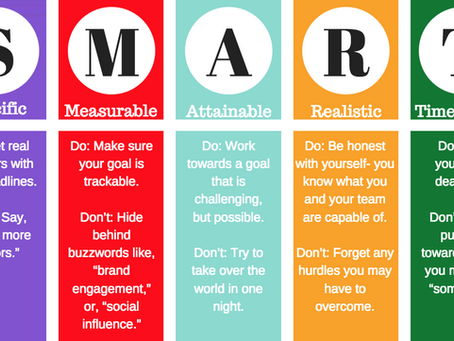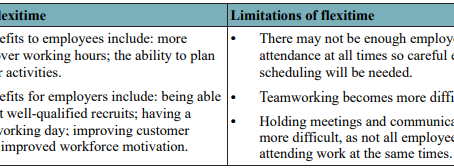top of page
CAIE BUSINESS STUDIES
IGCSE & A LEVELS GUIDE
Content, Exam Preparation and Revision
Find the easiest way to prepare for the Cambridge IGCSE and A Levels with simplified content, exam tips, and revision guides. All of which has been written with an easy to grasp language making the Business Studies syllabus easy to navigate.
IGCSE
A Level
Search


Conflicting Stakeholders' Interests (5.2)
Chapter 5 - Stakeholders in Business Learning Objective: To understand how businesses approach conflicting stakeholders' interests. As...
Thiago Casarin Lucenti
Sep 292 min read


Stakeholders and Their Interests (5.1)
Chapter 5 - Stakeholders in Business Learning Objective: To understand the several stakeholders and their various interests New Airport...
Thiago Casarin Lucenti
Sep 282 min read


R&D and The New Product Development Process (21.2)
Chapter 21 - Marketing Analysis Lesson Objective: To understand the importance of R&D and new product development In many industries it...
Thiago Casarin Lucenti
Sep 283 min read


Final Notes on Business Objectives (4.3)
Chapter 4- Business Objectives Learning Objective: Communicating, changing, and translating corporate objectives. We discussed the...
Thiago Casarin Lucenti
Sep 263 min read


Business Growth and Failure (3.3)
Chapter 3 - Size of Business Learning Objective: To understand how businesses grow Last lesson we learned why some businesses grow and...
Thiago Casarin Lucenti
Sep 252 min read


The Various Types of Elasticity of Demand (21.1)
Chapter 21 - Marketing Analysis Learning Objective: To understand the different factors impacting elasticity of demand I hope you...
Thiago Casarin Lucenti
Sep 243 min read


Liquidity Ratios (23.2)
Chapter 23 - Analysis of Accounts Lesson Objective: To understand how to calculate and interpret liquidity ratios Liquidity: Liquidity ...
Thiago Casarin Lucenti
Sep 232 min read


Hierarchy of Objectives (4.2)
Chapter 4 - Business Objectives Learning Objective: Hierarchy of Objectives Objectives are also of key importance because they allow...
Thiago Casarin Lucenti
Sep 232 min read


Flexible Working and Measuring Employee Performance (16.2)
Chapter 16 - Human Resources Management Strategy Learning Objective: To understand additional methods of flexible working; to understand...
Thiago Casarin Lucenti
Sep 224 min read


Start-Ups and Growth (3.2)
Chapter 3 - Enterprise, Business Growth, and Size Learning Objectives: To understand the importance of startups to economies We all heard...
Thiago Casarin Lucenti
Sep 222 min read


Hard vs. Soft HRM: Employment Contracts Differences (16.1)
Chapter 16 - Human Resources Management Strategy Learning Objective: To understand the differences between hard and soft HRM Human...
Thiago Casarin Lucenti
Sep 223 min read


Business Objectives (4.1)
Chapter 4- Business Objectives Learning Objective: Business objectives of private and public sector businesses Business objectives are...
Thiago Casarin Lucenti
Sep 223 min read


Introduction to Analysis of Accounts and Profitability Ratios (23.1)
Chapter 23 - Analysis of Accounts Lesson Objective: To understand the various profitability ratios available You should know by know the...
Thiago Casarin Lucenti
Sep 193 min read


Entrepreneurship and Business Plans (3.1)
Chapter 3 - Enterprise, Business Growth and Size Learning Objective: To understand what is an entrepreneur and business plans An...
Thiago Casarin Lucenti
Sep 172 min read


Business Growth (3.3)
Chapter 3 - Size of Business Learning Objective: Business Growth (3.3) There are many reasons why businesses want to grow : With growth...
Thiago Casarin Lucenti
Sep 173 min read


Leadership Theories (15.1)
Chapter 15 - Leadership Learning Objectives: To understand the many characteristics and roles of leaders. Leadership involves setting...
Thiago Casarin Lucenti
Sep 174 min read


Public and Private Sectors (2.2)
Learning Objective: To understand private and public sectors (mixed economies) Chapter 2 - Classification of Businesses We now completely...
Thiago Casarin Lucenti
Sep 161 min read


The Meaning of 'An Economy' (2.1)
Lesson Objective: The Meaning of 'An Economy' (2.1) What do you understand by the word 'economy'? What is an 'economy'? An economy is the...
Thiago Casarin Lucenti
Sep 152 min read


Managing and Controlling Strategic Change (9.3)
Chapter 9 - Corporate Planning and Implementation Class Objective: To understand the stages of change management The relationship between...
Thiago Casarin Lucenti
Sep 157 min read


Balance Sheet (a.k.a. Statement of Financial Position) (22.1)
Chapter 22 - Balance Sheets Learning Objective: To understand the uses and how to analyze Balance Sheets After Cash Flow Forecast and...
Thiago Casarin Lucenti
Sep 112 min read
CONTACT
bottom of page